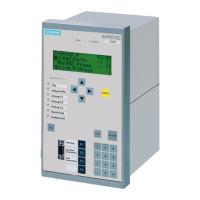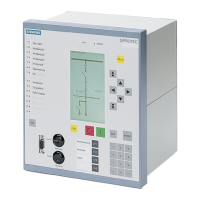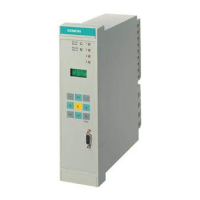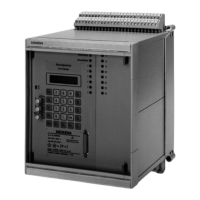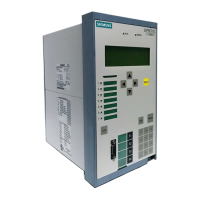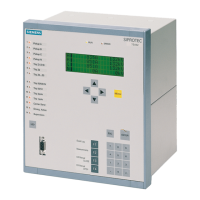1 Introduction
20
7SD610 Manual
C53000-G1176-C145-4
pole, three-pole or single- and three-pole automatic reclosure as well as multi-shot au-
tomatic reclosure.
Apart from the short-circuit protection functions mentioned, a thermal overload protec-
tion has been integrated which protects in particular cables and power transformers
from undue heating through overload. Furthermore, multi-step over and undervoltage
as well as frequency protection and restricted earth fault protection can be used (or-
dering variant). An optional circuit breaker failure protection provides rapid backup
fault clearance instruction to the adjacent circuit breakers in case the local breaker
fails to respond.
Control Functions The device is equipped with control functions which operate, close and open, switch-
gear via the integrated operator panel, the system interface, binary inputs, and using
a personal computer with DIGSI software. Using auxiliary contacts of the switch and
binary inputs of the device, switching states feedbacks are issued. The current status
(or position) of the primary equipment can be read out at the device, and used for in-
terlocking or plausibility monitoring. The number of the devices to be switched is
limited by the binary inputs and outputs available in the device or the binary inputs and
outputs allocated for the switch position feedbacks. Depending on the resource one
(single point indication) or two binary inputs (double point indication) can be used. The
capability of switching primary equipment can be restricted by appropriate settings for
the switching authority (remote or local), and by the operating mode (interlocked/non-
interlocked, with or without password request). Interlocking conditions for switching
(e.g. switchgear interlocking) can be established using the integrated user-defined
logic.
Indications and
Measured Values;
Fault Recording
The operational indications provide information about conditions in the power system
and the device. Measurement quantities and values that are calculated can be dis-
played locally and communicated via the serial interfaces.
Indications can be assigned to a number of LEDs on the front panel (allocatable), can
be externally processed via output contacts (allocatable), linked with user-definable
logic functions and/or issued via serial interfaces (see Communication below).
During a fault (power system fault) important events and changes in conditions are
saved in fault logs (Event Log or Trip Log). Instantaneous fault values are also saved
in the device and may be analyzed subsequently.
As a special feature the values are synchronized between the line terminals via the
communication link.
Communication Serial interfaces are available for the communication with operating, control and
memory systems.
A 9-pin DSUB socket on the front panel is used for local communication with a person-
al computer. By means of the SIPROTEC 4 operating software DIGSI all operational
and evaluation tasks can be executed via this operator
interface, such as specifying
and modifying configuration parameters and settings, configuring user-specific logic
functions, retrieving operational messages, fault records and measured values, inquir-
ing device conditions and measured values, issuing control commands.
To establish an extensive communication with other digital operating, control and
memory components the device may be provided with further interfaces depending on
the order variant.
The service
interface can be operated via the RS232 or RS485 interface and also
allows communication via modem. For this reason, remote operation is possible via
www . ElectricalPartManuals . com
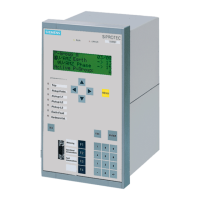
